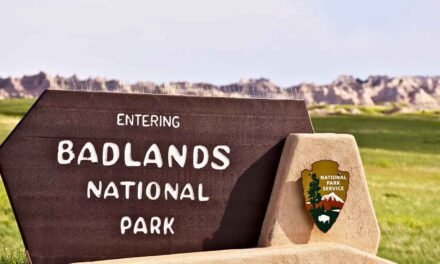Overview of Guadalupe Mountains National Park
Established in 1972, Guadalupe Mountains National Park is a stunning landscape located in West Texas. The park is known for its impressive Guadalupe Peak, the highest point in Texas, and its ancient fossil reef, which dates back 265 million years. With over 80 miles of hiking trails, striking geological features, diverse flora and fauna, and significant cultural history, Guadalupe Mountains National Park offers a one-of-a-kind experience for outdoor enthusiasts, nature lovers, and history buffs alike.
Guadalupe Mountains National Park Location
Guadalupe Mountains National Park is situated in West Texas, about 110 miles east of El Paso and 56 miles southwest of Carlsbad, New Mexico. The park is easily accessible via U.S. Highway 62/180. The nearest airport is the El Paso International Airport, and the closest Amtrak station is located in Alpine, Texas.
Guadalupe Mountains National Park Things to Do
There are a variety of activities to enjoy at Guadalupe Mountains National Park, suitable for visitors of all ages and interests. Some popular activities include:
Hiking and Backpacking
With over 80 miles of trails, the park offers a wide range of hiking and backpacking opportunities. From short, easy walks to challenging backcountry treks, there’s something for everyone. Some popular trails include the Guadalupe Peak Trail, which leads to the highest point in Texas, the McKittrick Canyon Trail, known for its vibrant fall colors, and the Devil’s Hall Trail, which takes you through a natural rock hallway.
Wildlife and Bird Watching
The park is home to a diverse array of wildlife, including mule deer, elk, javelina, gray foxes, and more than 300 species of birds. Visitors can often spot wildlife along the trails, near water sources, or in the more remote areas of the park. Birdwatching is particularly popular in McKittrick Canyon, where you might spot golden eagles, red-tailed hawks, and a variety of songbirds.
Stargazing
Guadalupe Mountains National Park is renowned for its dark skies, making it an ideal destination for stargazing. The park frequently hosts stargazing events and night sky programs, or you can simply find a quiet spot away from artificial light to enjoy the celestial show.
Interpretive Programs
The park offers a variety of interpretive programs, such as guided hikes, ranger talks, and campfire programs, which provide visitors with a deeper understanding of the park’s natural and cultural history. Check the park’s event calendar or inquire at the visitor center for current program offerings.
Guadalupe Mountains National Park Itineraries
To make the most of your visit to the park, consider planning your trip around one of these suggested itineraries:
One-Day Visit
A one-day visit should focus on exploring the most accessible attractions in the park. Start at the Pine Springs Visitor Center, where you can learn about the park’s history, geology, and wildlife. From there, hike the Devil’s Hall Trail or the Smith Spring Trail, both of which offer relatively short and moderate hikes with unique features. If you prefer a more leisurely day, consider driving to the Frijole Ranch and exploring the Frijole Ranch History Museum before taking a short walk to the Manzanita Spring or the Smith Spring Trailhead.
Two-Day Visit
For a two-day visit, spend the first day following the one-day itinerary. On the second day, head to McKittrick Canyon and hike the McKittrick Canyon Trail, which is famous for its vibrant fall colors and the picturesque Pratt Cabin. This moderate hike will provide you with stunning views and an opportunity to experience the park’s diverse ecosystems. Alternatively, you can hike the more challenging Guadalupe Peak Trail, which leads to the highest point in Texas and offers breathtaking panoramic views.
Three-Day Visit or Longer
If you have three or more days to spend in the park, consider exploring the park’s backcountry by obtaining a backcountry permit and embarking on a multi-day backpacking trip. Popular backpacking routes include the Tejas Trail, the Bush Mountain Trail, and the Bowl Trail. These longer treks allow you to truly immerse yourself in the park’s diverse and stunning landscapes.
Best Season to Visit Guadalupe Mountains National Park
The best time to visit Guadalupe Mountains National Park depends on your preferred activities and tolerance for weather conditions. Spring (April-May) and fall (October-November) are ideal times to visit, as temperatures are moderate, and the park is less crowded. Fall is especially popular for its vibrant foliage in McKittrick Canyon.
Summer (June-August) can be quite hot, with temperatures often exceeding 90°F (32°C) at lower elevations. However, the park is typically less crowded during this time, and higher elevations provide cooler temperatures for hiking. Winter (December-February) is the least visited season, with colder temperatures and occasional snowfall, but it offers a unique and serene experience for those willing to brave the elements.
Guadalupe Mountains National Park Weather
Weather in Guadalupe Mountains National Park can vary greatly depending on the season and elevation. Summers are hot and dry, with daytime temperatures often exceeding 90°F (32°C) at lower elevations, while nighttime temperatures can drop significantly. Spring and fall bring more moderate temperatures, with daytime highs ranging from 60°F to 80°F (15°C to 27°C) and cooler nights. Winters are cold, with daytime temperatures ranging from 40°F to 60°F (4°C to 15°C) and nighttime temperatures often dropping below freezing. Snowfall is possible, particularly at higher elevations.
Visitors should dress in layers and be prepared for changing conditions. Always check the weather forecast before your visit and be prepared to adjust your plans accordingly.
Guadalupe Mountains National Park Hotels and Camping
There are limited lodging and camping options within the park, but nearby communities offer additional accommodations:
Pine Springs Campground
This campground, located within the park, offers 20 tent sites and 19 RV sites (no hookups). Amenities include potable water, restrooms, and a dump station. The campground operates on a first-come, first-served basis, and reservations are not accepted.
Dog Canyon Campground
This smaller, more remote campground is located on the park’s north side and offers nine tent sites and four RV sites (no hookups). Amenities include potable water and restrooms. The campground operates on a first-come, first-served basis, and reservations are not accepted.
Backcountry Camping
For those interested in a more immersive wilderness experience, the park offers backcountry camping with a required permit. There are 10 designated backcountry campsites along the trails, and primitive camping is allowed in certain areas with a permit. Be sure to follow Leave No Trace principles and pack out all trash.
Hotels and Motels
While there are no hotels within the park, nearby communities such as White’s City and Carlsbad, New Mexico, offer a range of lodging options, from budget motels to more upscale accommodations.
Guadalupe Mountains National Park Restaurants
There are no restaurants within the park, so visitors should plan to bring their own food and supplies. Picnic areas are available at the Pine Springs Visitor Center, Frijole Ranch, and McKittrick Canyon. Nearby communities, including White’s City and Carlsbad, offer a variety of dining options, from fast food to sit-down restaurants.
Guadalupe Mountains National Park Wildlife and Plants
The park is home to a diverse range of flora and fauna, offering visitors ample opportunities to observe and appreciate the area’s natural beauty.
Wildlife
Mammals that inhabit the park include mule deer, elk, javelina, gray foxes, and more than 300 species of birds. Reptiles, such as rattlesnakes and lizards, are also commonly found in the park. Birdwatchers will enjoy the variety of bird species present, including golden eagles, red-tailed hawks, and various songbirds.
Plants
The park’s diverse plant life is influenced by its varying elevations and habitats. Lower elevations are dominated by desert scrub vegetation, such as creosote bush, yucca, and cacti. As you ascend in elevation, you’ll encounter pinyon pine and juniper woodlands, followed by ponderosa pine and Douglas fir forests at the highest elevations. In the canyons and riparian areas, you’ll find a lush mix of deciduous trees, ferns, and wildflowers.
Guadalupe Mountains National Park History
The park’s history spans thousands of years, with evidence of human occupation dating back to the Paleo-Indian period. The Mescalero Apache people inhabited the region for centuries, utilizing the area’s resources for hunting, gathering, and spiritual practices.
In the mid-19th century, European-American settlers and explorers arrived in the area, followed by ranchers and miners who sought to establish homesteads and exploit the region’s resources. The Frijole Ranch, now a museum within the park, is an example of the early ranching operations in the region.
The establishment of Guadalupe Mountains National Park in 1972 ensured the protection and preservation of this unique and diverse landscape for future generations to appreciate and enjoy.
Guadalupe Mountains National Park Geology
The park’s most striking geological feature is the ancient Capitan Reef, which dates back to the Permian Period, approximately 265 million years ago. This fossil reef formed in a shallow sea that once covered the region and is now exposed as the towering Guadalupe Mountains. The park’s diverse geology includes limestone, gypsum, and sandstone formations, as well as the striking salt flats to the west.
Conclusion
Guadalupe Mountains National Park offers visitors an unforgettable experience, with its dramatic landscapes, diverse flora and fauna, and rich cultural history. Whether you’re a seasoned hiker or a nature enthusiast, there’s something for everyone at this West Texas gem. With its unique geological features, dark skies for stargazing, and diverse plant and animal life, the park provides a one-of-a-kind experience that is sure to leave a lasting impression. So plan your visit today and discover the natural beauty and cultural significance of Guadalupe Mountains National Park.





